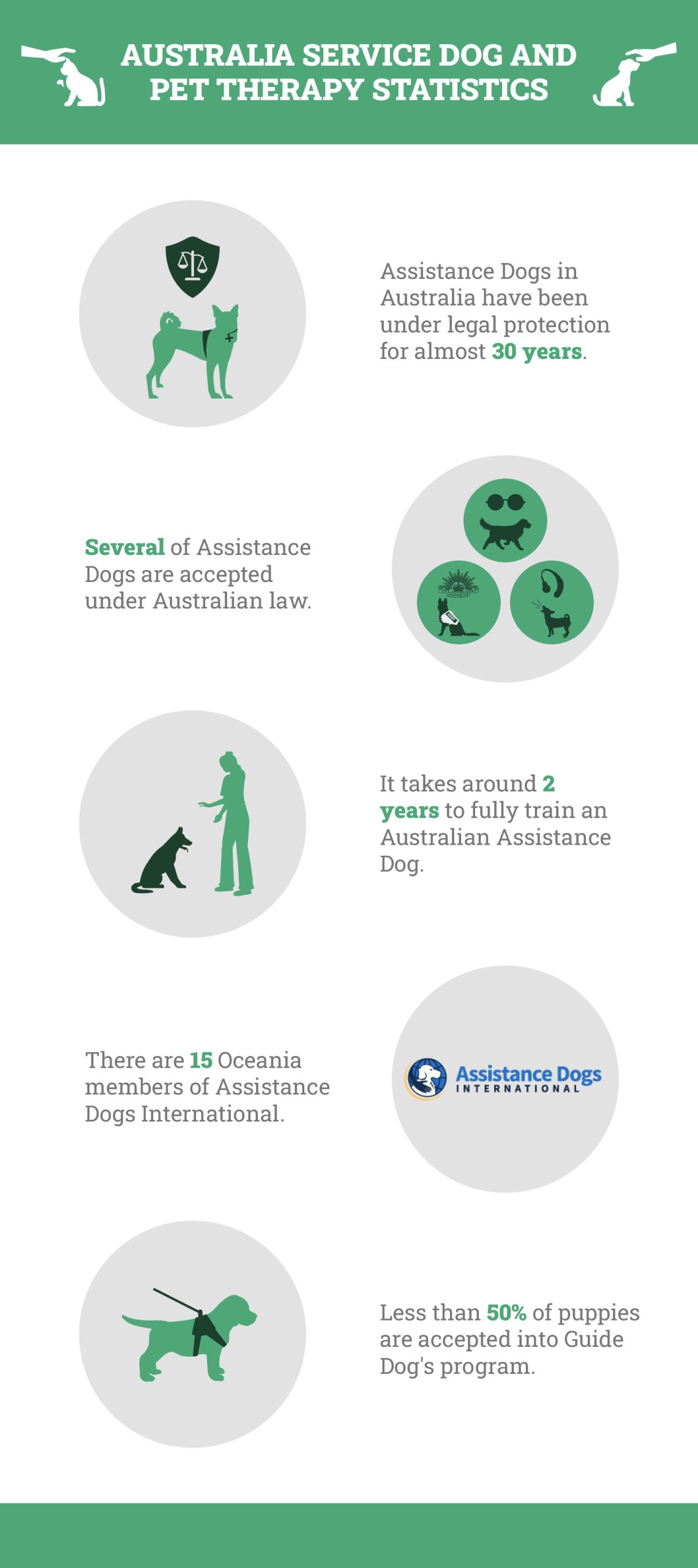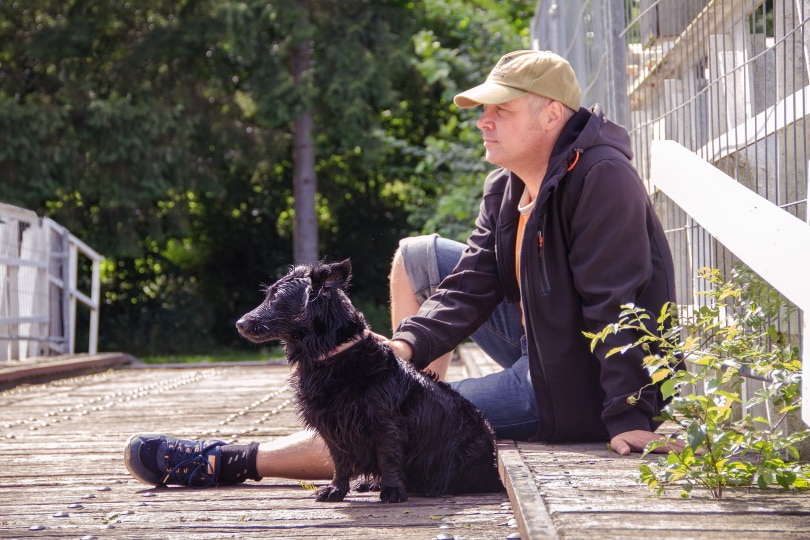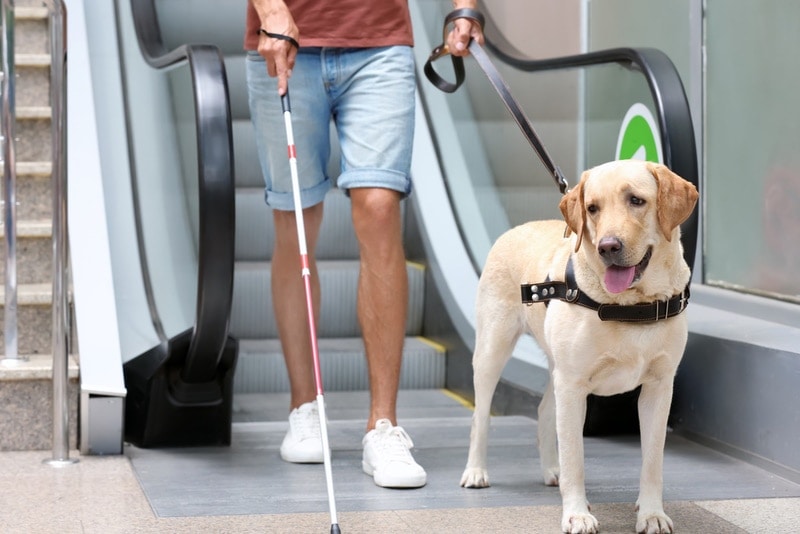In this article
View 2 More +Note: This article’s statistics come from third-party sources and do not represent the opinions of this website.
Dogs are our most loyal and loving companions, but for many people, they are far more than companions. Service dogs—or as they’re more commonly called in Australia, assistance dogs—are an integral part of the daily lives of people with physical disabilities and mental illnesses. The work that these dogs do can provide comfort, a feeling of safety and security, and even lifesaving medical intervention.
It’s important to know why assistance dogs are absolute necessities for many people. When people try to pass off untrained pets as assistance dogs, they end up harming those who require these animals in their daily lives. So, here are interesting statistics about assistance dogs and pet therapy.

Top 12 Australia Service Dog and Pet Therapy Statistics
- It can cost $60,000 or more to train and assign an assistance dog.
- Assistance dogs have been provided legal protections for almost 30 years.
- It can take 2 years to receive a trained assistance dog.
- It has been over 40 years since assistance dogs were first recognized in legislation.
- Several types of assistance dogs are accepted under Australian law.
- It takes around 2 years to fully train an assistance dog.
- There are only 24 government-accredited assistance dog trainers in all of Australia.
- There are 15 Oceania members of Assistance Dogs International.
- Assistance Dogs International placed over 1,000 dogs in the Oceania region in 2022.
- The OPK9 program from the Royal Society for the Blind has provided trained assistance dogs to veterans with PTSD since 2013.
- Less than 50% of puppies are accepted into Guide Dog’s program.
- Assistance dogs typically work for 8 to 9 years before retiring.


Costs and Legal Protections
1. It can cost $60,000 or more to train and assign an assistance dog.
(Assistance Dogs Australia)
The training requirements for assistance dogs in Australia are stringent, and they come at a hefty price. It can cost upwards of $60,000 to put a dog through training and then place them with a person whose needs the dog is trained to meet. Not all assistance dogs are the right fit for every person in need, so they must be carefully matched.

2. Assistance dogs have been provided legal protections for almost 30 years.
(National Disability Gateway)
In 1992, the Australian government passed the Disability Discrimination Act, which provides legal protections for assistance dogs to accompany their owners everywhere they are needed, with very few exceptions.
3. It can take 2 years to receive a trained assistance dog.
(Assistance Dogs Australia)
There is a waiting list to receive an assistance dog, whether it is for visual impairment or psychological disabilities. Most people must wait up to 2 years before getting their dog.
4. It has been over 40 years since assistance dogs were first recognized in legislation
(DLGSC)
In 1976, the Dog Act was passed. This piece of legislation laid out the requirements of training for an assistance dog. It also provided protections that allowed dogs to be trained privately instead of through an accredited organization. However, all assistance dogs not trained by an accredited organization must pass the Public Access Test (PAT) to be allowed the protections laid out by later legislation.

Types of Assistance Dogs and Training
5. Several types of assistance dogs are accepted under Australian law.
(HealthDirect)
Under Australian law, several types of assistance dogs are accepted, including mobility assistance animals, guide dogs, hearing assistance animals, medical alert animals, psychiatric assistance animals, and assistance animals for developmental disorders. Emotional support, visitation, facility, companion, and therapy dogs can also be considered assistance dogs, but they do not have the same protections as legally accredited ones.

6. It takes around 2 years to fully train an assistance dog.
(Assistance Dogs Australia)
A professionally trained assistance dog lives with a volunteer for their first 12–18 months and then moves to the training school to get 6–12 months of advanced training and certification from qualified instructors. Puppies are carefully selected for training by temperament and personality.
7. There are only 24 government-accredited assistance dog trainers in all of Australia.
(Queensland Government)
Assistance dog trainers that are accredited by the government must meet specific criteria in their training processes to maintain their accreditation. To date, there are only 24 services that are approved by the Australian government.

Accreditation and Assistance Dogs by the Numbers
8. There are 15 Oceania members of Assistance Dogs International.
(Assistance Dogs International)
Assistance Dogs International is a U.S.-based coalition of non-profit organizations from around the globe. This organization is the leading authority in the assistance dog industry. It updates its membership numbers every year or so, and as of 2023, there were 12 accredited members and three candidates within Oceania.
9. Assistance Dogs International placed over 1,000 dogs in the Oceania region in 2022.
(Assistance Dogs International)
According to the most recent numbers, 538 guide dogs, 183 hearing dogs, and 367 service dogs were placed across Oceania in 2022.

10. The OPK9 program from the Royal Society for the Blind has provided trained assistance dogs to veterans with PTSD since 2013.
(Government House Adelaide)
OPK9 stands for Operation K9 and was launched in 2013 to provide psychiatric assistance dogs to veterans who have PTSD, a condition that reportedly affects one in six post-service veterans. These trained therapy dogs have been shown to help their handlers by reducing their depression, stress, anxiety, alcohol consumption, and PTSD symptoms.
11. Less than 50% of puppies are accepted into Guide Dog’s program.
(Guide Dogs Victoria)
Guide Dogs is part of the International Guide Dog Federation, which has chapters across Australia. Its guide dogs must undergo a thorough training program, and the selection criteria are narrow for safety reasons. Less than 50% of the potential pups are accepted into the full program.
12. Assistance dogs typically work for 8 to 9 years before retiring.
(Assistance Dogs International)
An assistance dog has an incredibly demanding job, and they must be at peak performance as often as possible, which can be wearying over the years. Also, common breeds of assistance dogs are Labrador Retrievers, Poodles, and Golden Retrievers, which don’t typically have long lifespans. Like humans, dogs start to slow down when they get older, and this can be dangerous for assistance dog handlers. Therefore, when the dog is typically 10 years old, they retire from their job and will either stay with their handler as a companion animal (without assistance dog access rights) or be rehoused elsewhere as a pet.

Frequently Asked Questions About Service and Pet Therapy Dogs in Australia
How many Assistance Dogs are there in Australia?
Unfortunately, since there is no official national registry of assistance dogs in Australia, we do not know the official number. Without a national registry, it is too difficult to provide an estimate of how many assistance dogs are currently being used.
What is the average wait time to receive an Assistance Dog?
The average wait time to receive a specially trained assistance dog of any kind is approximately 24 months due to the lengthy training process. (SmartPups)
Can an Assistance Dog enter businesses and other locations that don’t allow pets?
Yes. Assistance dogs are considered medically necessary and offered protections that do not extend to pets and emotional support and therapy dogs. (Assistance Dogs Australia)
What might prevent a dog from becoming certified as an Assistance Dog?
Certain behaviors will lead to an automatic failure when it comes to testing for Assistance Dog certification. Growling, biting, and other signs of aggression can lead to automatic failure. Other behaviors that will cause a dog to fail the certification include relieving themselves with no regard for the location and uncontrolled behavior or a clear lack of training. (DCSSDS)

What happens to dogs that fail training or certification?
Dogs that fail the training or certification process are often adopted by similar organizations and sometimes, the general public. Even dogs that fail a program are typically highly intelligent and well-trained, making them exceptional pets. Many accredited organizations have waiting lists of people hoping to get dogs that fail out of the programs. (Royal Guide Dogs Australia)
What should I do if I see someone with an Assistance Dog?
If you encounter someone with an assistance dog, the best option is to simply leave them alone. If you need to interact with them, you should address the person and ignore the dog. Even if the dog doesn’t seem to be working, you should always assume that they are unless you are told otherwise. You should not distract or attempt to give commands to an assistance dog. Do not ask personal questions, especially about the disability of the handler, and don’t be offended if the handler declines to discuss their dog with you. (Guide Dogs Queensland Limited)
How can someone get an Assistance Dog?
Assistance dogs can come from accredited training organizations, or they can be privately acquired by the handler and trained to pass the PAT. For financial assistance, the National Insurance Disability Scheme (NDIS), a government-funded organization that helps offset the costs associated with the care of disabilities, can help pay for the fees associated with acquiring an assistance dog. NDIS will even help pay for expenses associated with the care of the dog, up to $2,600 per year. (Assistance Dogs Australia)

Conclusion
Assistance dogs are a fantastic resource for people with disabilities. Thanks to funding options through the Australian NDIS and funding to accredited programs, these dogs often come at no initial cost to their handlers. However, the training expenses are high, making donations a necessary part of operations for many training organizations.
Remember that assistance dogs make life easier and safer for people with disabilities. Always treat handlers and their animals with respect, and don’t distract the dogs from their jobs. The handler’s life often depends on their assistance dog paying attention, so be sure to leave them alone and let them do their job.
Featured Image Credit: Piqsels


















